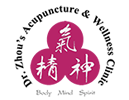Five Element theory is one of the major systems of thought within traditional Chinese medicine. Also referred to as the “five phase” theory by some practitioners, Five Element theory has been used for more than 2,000 years as a method of diagnosis and treatment. While it is an important component of traditional Chinese medicine, today Five Element theory is not used by every acupuncturist and doctor of Oriental medicine; rather, it is employed to a certain degree, depending on the practitioner’s training and education, and the style of acupuncture that he or she practices.
How Does Five Element Theory Work?
Essentially, Five Element theory is used to help explain the cause of particular diseases, and to associate signs or symptoms to particular organs and afflictions. In the context of “phases,” Five Element theory helps to explain the processes that are occurring the body throughout various stages of disease and healing. This is particularly useful in explaining the processes that take place during the generating and controlling cycles mentioned in Five Element theory.
Listed below are the Five Elements and their corresponding organs, directions, colors, etc.
| Wood | Fire | Earth | Metal | Water | |
|---|---|---|---|---|---|
| Seasons | Spring | Summer | Late Summer | Autumn | Winter |
| Zang /Yin organs | Liver | Heart | Spleen | Lung | Kidney |
| Fu /Yang organs | Gallbladder | Small Intestine | Stomach | Large Intestine | Bladder |
| Directions | East | South | Middle | West | North |
| Tastes | Sour | Bitter | Sweet | Pungent | Salty |
| Tissues | Tendons | Vessels | Muscles | Skin/hair | Bones |
| Colors | Green | Red | Yellow | White | Blue/Black |
| Sense organs | Eye | Tongue | Mouth | Nose | Ear |
More About “Cycles”
Within Five Element theory are four main cycles, or ways in which the elements (and their associated emotions, colors, sounds, odors, etc.) interact. The first of these is the sheng, or generating cycle. In this cycle, each element serves as a “mother,” which promotes the growth and development of the following, or “child,” element. Each element provides a generating force or foundation for the element that immediately follows it, i.e., the Fire element provides a foundation for the Earth element, the Earth element provides a nurturing foundation for the Metal element, and so on.
The second main cycle is called the ke, or controlling cycle. According to ke cycle theory, each element is involved in a checks-and-balances relationship that helps keep things in order; each element both controls and is controlled by another element (Water, for example, controls Fire, but is itself controlled by Earth).
The third and fourth cycles in Five Element theory are cycles of imbalance. In the cheng cycle, or overactive cycle, an element overacts, or exerts too much control, over its subordinate element, damaging the element and causing imbalances in the body. For example, the Water element may completely put out the Fire element, or the Earth element may soak up the Water element completely. In the wu or insulting cycle, forces are actually reversed; the subordinate element returns the controlling force generated by the controlling element, again causing an imbalance in the body. Instead of Water suppressing Fire, in the wu cycle, Fire would actually burn up Water.
